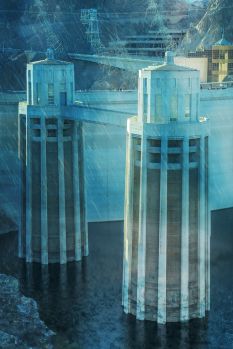Power Generation: Difference between revisions
From ASDSO Dam Safety Toolbox
(Created page with "Dams can be used to generate power as water passes through the dam. The energy created by the water passing through the dam is captured by a generator and passed onto a nearby power grid. The United States is one of the largest producers of hydropower in the world, second only to Canada. Dams produce between 8 and 12 percent of the nation’s power needs. border|350px|right|link=") |
No edit summary |
||
| Line 1: | Line 1: | ||
__NOTOC__ | |||
---- | |||
[[Image:PowerGeneration.jpg|border|350px|x350px|right|link=|Hoover Dam]] | |||
Dams can be used to generate power as water passes through the dam. The energy created by the water passing through the dam is captured by a generator and passed onto a nearby power grid. The United States is one of the largest producers of hydropower in the world, second only to Canada. Dams produce between 8 and 12 percent of the nation’s power needs. | Dams can be used to generate power as water passes through the dam. The energy created by the water passing through the dam is captured by a generator and passed onto a nearby power grid. The United States is one of the largest producers of hydropower in the world, second only to Canada. Dams produce between 8 and 12 percent of the nation’s power needs. | ||
Revision as of 16:57, 10 June 2022

Dams can be used to generate power as water passes through the dam. The energy created by the water passing through the dam is captured by a generator and passed onto a nearby power grid. The United States is one of the largest producers of hydropower in the world, second only to Canada. Dams produce between 8 and 12 percent of the nation’s power needs.
